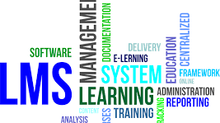How eLearning can remove barriers
- Dylan Hedges
- Jul 13, 2020
- 2 min read
Due to the ongoing COVID-19 pandemic it has dramatically shifted how we work and teach our learners in a very short space of time.
Suddenly the need to shift training from the classroom to online has happened and now more than ever you should consider how eLearning could be used in your learning and development strategy.
Below are some barriers that can be removed by using eLearning in 2020.
1. Removes physical barriers
One of the biggest challenges that can prevent people from accessing training is physical distance. When hosting a classroom session this means that most students will need to travel to the classroom, for some this isn’t a problem but for others they may have to travel very long distances and for students in other countries this might be impossible. eLearning helps to remove physical distance barriers, as eLearning is taken online the audience you can reach is much wider, if the student has an electronic device such as a laptop, tablet or smartphone and a network connection they will be able to access training online from any location at any time.
2. Removes cost barriers
Training can be costly, with traditional classroom training you have a number of costs such as the room, instructor and course materials, in addition to this there are also physical limitations to the amount of students that can attend. For learners this can become very costly and may even be unfordable for some students who come from lower income background or countries. eLearning helps to reduce this cost, by creating the training once and hosting it online all students need to take the training is a device and a network connection. This means they will not have to spend money on travel costs, accommodation costs and other costs associated with taking in person training.
3. Allows for change
With classroom training it can be hard to change the course once its been made. Last minute additions or changes can be tricky as the change has to be made, communicated to the instructor and then tested to see if it still works in the classroom. With eLearning this isn’t as much of an issue, if changes need to be made you can simply update the eLearning course using authoring tools, push the new course to the server and students can access the updated course. This provides a good level of flexibility for course owners as they can make changes without having to worry as much about how it is impacting the learners and their learning.































Commenti